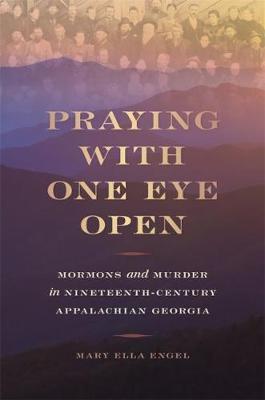Praying with One Eye Open

Praying with One Eye Open
Historian Mary Ella Engel adopts a different approach, arguing that the mob violence against Standing was a local event, best understood at the local level. Her examination of Standing's murder carefully situates it in the disquiet created by missionaries' successes in the North Georgia community. As Georgia converts typically abandoned the state for Mormon colonies in the West, a disquiet situated within a wider narrative of post-Reconstruction Mormon outmigration to colonies in the West. In this rich context, the murder reveals the complex social relationships that linked North Georgians-families, kin, neighbors, and coreligionists-and illuminates how mob violence attempted to resolve the psychological dissonance and gender anxieties created by Mormon missionaries. In laying bare the bonds linking Georgia converts to the mob, Engel reveals Standing's murder as more than simply mountain lawlessness or religious persecution. Rather, the murder responds to the challenges posed by the separation of converts from their loved ones, especially the separation of women and their dependents from heads of households.
PRP: 676.80 Lei
Acesta este Prețul Recomandat de Producător. Prețul de vânzare al produsului este afișat mai jos.
609.12Lei
609.12Lei
676.80 LeiLivrare in 2-4 saptamani
Descrierea produsului
Historian Mary Ella Engel adopts a different approach, arguing that the mob violence against Standing was a local event, best understood at the local level. Her examination of Standing's murder carefully situates it in the disquiet created by missionaries' successes in the North Georgia community. As Georgia converts typically abandoned the state for Mormon colonies in the West, a disquiet situated within a wider narrative of post-Reconstruction Mormon outmigration to colonies in the West. In this rich context, the murder reveals the complex social relationships that linked North Georgians-families, kin, neighbors, and coreligionists-and illuminates how mob violence attempted to resolve the psychological dissonance and gender anxieties created by Mormon missionaries. In laying bare the bonds linking Georgia converts to the mob, Engel reveals Standing's murder as more than simply mountain lawlessness or religious persecution. Rather, the murder responds to the challenges posed by the separation of converts from their loved ones, especially the separation of women and their dependents from heads of households.
Detaliile produsului









